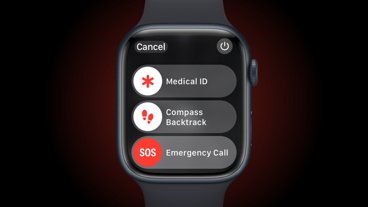"Minecraft: Java Edition" gets native Apple Silicon support in "The Wild Update" version 1.19 which also introduces new biomes.
"Minecraft" is a Microsoft-owned game by Mojang Studios and it is among the most popular video games ever created. It is available on every major console, mobile device, and computer, and now it has native support for Apple's M-series processors.
Mojang introduced the native compatibility quietly with no fanfare or even a word in the press release. Buried deep within the official release notes found within the game launcher, users can find a single line: "The M1 ARM64 architecture is now supported."
Native support means that the Java edition will no longer need to run within Rosetta 2 and have full access to the M1 processor's capabilities. It isn't clear exactly how much of a performance boost this will provide, but it could be significant.
The new update launched on June 7 across every edition of the game with new biomes to explore. There are two versions of "Minecraft" available with distinct feature sets — Bedrock and Java.
Bedrock is the modern version of "Minecraft" that appears on iPhone, iPad, and game consoles like the Playstation. This version is cross-platform compatible so players can interact with each other within subscription-based worlds called "Realms."
The "Minecraft: Java Edition" is the classic version of "Minecraft" still updated in tandem with the Bedrock version. It is available on Mac, PC, and Linux with its own siloed Realms cross play. This is the only version available on Mac and it has been updated with native Apple Silicon support in version 1.19.
Mac users interested in buying "Minecraft: Java Edition" can purchase it from the Minecraft website for $29.99. The Java edition is bundled within a launcher with the Bedrock version, but it isn't accessible on Macs.
 Wesley Hilliard
Wesley Hilliard








 Christine McKee
Christine McKee
 Charles Martin
Charles Martin
 Mike Wuerthele
Mike Wuerthele
 Marko Zivkovic
Marko Zivkovic
 Malcolm Owen
Malcolm Owen


 William Gallagher
William Gallagher


-m.jpg)






14 Comments
Since Minecraft uses Java, its been possible for a while now to use a custom Minecraft launcher app like MultiMC to load it with an ARM Java runtime environment (JRE) and have it run natively on Apple Silicon. But nice to see that it's finally supported out of the box.
“
So, how do I go about launching it on an M1 Mac?
Your mileage obviously may vary. I have a 16" Macbook Pro with the 10 CPUs and 32 GPU cores. Running straight x86 Java Minecraft through Rosetta is honestly barely playable - sometimes you can get 20 fps, but you get frequent slowdowns. It's a lot like trying to play Minecraft on my 2015 MBP. Then I used MultiMC with (and this is important) an ARM version of Java that is NOT the one that comes bundled with MacOS. I was shocked to immediately get 500-700 frames per second, just like YouTubers got! But I found this was a peak case - it can drop as low as 60FPS. But mind you, this is at high resolution and a render/simulation distance of the full 32 chunks. (It you use the java that's bundled with Macs, you only get about 45 fps.)
I've been doing a lot of comparisons with M1 native versions vs Intel, and Minecraft hit the #1 spot, often running a solid 100x faster in the best case, and about 5x faster in the worse case. I will be overjoyed if the new Minecraft Java for M1 will be this good. All they ever had to do was switch out which JVM they bundled Minecraft with, but I'm not surprised they kept this really low key - they don't want people noticing how much faster Java with M1 is versus Bedrock on Wintel.
FWIW, I found the best performance using Azul's Java 17 ARM64 JDK with ManyMC. It's truly amazing - peak is about 100x faster in everything - imagine selecting a Minecraft world and being able to start playing in less than 4 seconds! :). Minecraft and Java really seems to have the single greatest speedup going native of all applications. For me, #2 was Blender, which was about 12x faster.